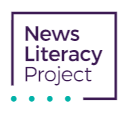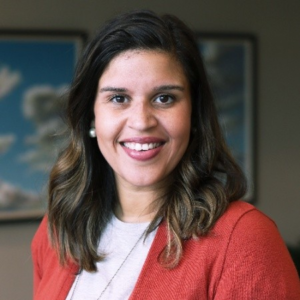
Testing Data Literacy on Main Street

(Billion Photos/Shutterstock)
How good are you at discerning fact from fiction in the news and on social media? Can you spot cherry-picked data sets, poorly selected samples, or infographics that misrepresent data? SAS and the News Literacy Project have teamed up to help America find out.
The two organizations recently launched a quiz that allows anybody to check their data literacy when it comes to consuming news. The five-question quiz asks test-takers to gauge the validity of claims based on the supporting evidence or (spoiler alert) the lack of evidence, as the case may be.
The whole exercise is designed to see how good (or bad) people are at spotting misrepresentations of data in news reports and on social media, says Anjelica Cummings, SAS’s manager of social innovation programs, partnerships, and communications.
“We consume so much media and news every day, and the constant scroll,” Cummings says. “Are we able to identify whether we have the full story, the most accurate story in the piece of data that we’re seeing? Are we able to decipher the data in a way that is accurate?”
We don’t have answers to those questions yet. The quiz was just launched very recently, and SAS and the News Literacy Project do not yet have results to share. But judging from the types of questions and the statistical trickery that is involved here, it would be surprising to see America get a straight A on data literacy.
There are lots of ways that people can be tripped up by data and statistics in news stories and on social media. For example, how can we be sure that a sample is representative of the population being surveyed? Was the sample diverse enough? Does the news story misrepresent the conclusions? Did the infographic prioritize glitz over substance?
Many of these poor data depictions are the results of honest mistakes, as journalists traditionally have been considered rather poor at math. But there’s also a conscious element to disinformation that news consumers should be aware of.
That there is room for improvement in data literacy on Main Street–let alone in the corporate offices of America, where data-driven innovation has become the name of the game–should not come as a surprise. The goal of SAS’ and the News Literacy Project’s test is to showcase the data literacy gap and start a conversation about how to get the needle pointing in a more positive trajectory, Cummings says.
“Being able to just create that moment to pause and know the right question to ask and the gaps to look for, is the focus that were trying to go after,” she tells Datanami. “If you know that sometimes statistics can be [mis]represented, that’s an area to look for. But maybe the statistics are fine, and it’s the way the data was collected isn’t an accurate representation for the story we’re trying to tell. If you go into news articles and stories with that mindset, we can begin to have a better understanding of the information we’re seeing.”
The News Literacy Project has established an educational program called Checkology that’s designed to make students of all ages better consumers of data and statistics. The Checkology course is being adopted by schools, Cummings says. It’s an online course, and it fits in very well with online learning, which has become the norm for public and private schools during the COVID-19 pandemic.
In its work work with the News Literacy Project, SAS is focusing on topics like: critically analyzing the data collection process; dissecting how claims of data are made in the news; understanding charts and graphs; not getting tripped up with statistics; understanding how data can be skewed in infographics; and being critical of claims made in social media.
The goal is not a perfect understanding of data and statistics and all the ways that they can be abused by news outlets and social media. But hopefully the partnership nudges folks in that direction, Cummings says.
“We might not be able to change the person today, but we surely can help the young learner, the future leaders, to say ‘How do you become more responsible for the information you consume?’” she says. “And if it just comes down to not taking things at face value, of knowing how to ask the right question, of being curious enough of the information your receiving and not just copying and pasting or sharing it on social media, but taking a moment to pause, we start to move make the needle there.”
Many of these young people will grow up to become professionals who must work with data, and some number of them might also go on to become full-fledged data scientists. Getting them to be skeptical of data and know how to interrogate can go a long way in helping that person become a more competent data consumer in the years to come.
“But it’s not just a critical skill to be a marketable future professional,” Cummings adds. “It’s also just a fundamental tool that will help all individual consume and analyze information we receive. So whether you go down the path of data science, you will still have to be able to know how to communicate about data.”
To take the data literacy test, go to https://newslit.org/tips-tools/can-you-make-sense-of-data.
Related Items:
The Critical Importance of Data Literacy
Data Science Back to School: Accelerate Your Education
The Secret to Data and Analytics Success Is…People




























